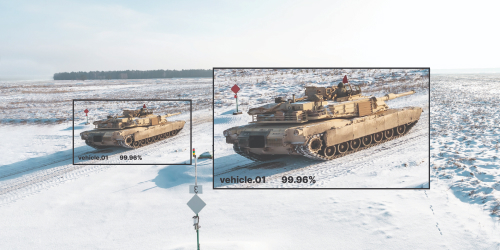The great power competition has returned, with Russia and China simultaneously advancing warfighting capabilities with increased lethality, range, and speed. The potential for lost military advantage by the United States is significant and military leaders at the Pentagon are pushing modernization initiatives to meet the demands of the National Defense Strategy (NDS).
Intelligence, surveillance, and reconnaissance (ISR) assets are critical to US Military dominance. ISR systems range in size from hand-held devices to satellites. ISR systems collect and process insights from unstructured data. These insights are used to support lighting fast information transfer for making more informed decisions in the field.
The Department of Defense (DOD) is positioning the U.S. and allied forces to outthink, outpace, and outmaneuver their adversaries, and ISR capabilities play a central role in these efforts. They plan to connect ISR sensors across all warfighting domains (space, air, land, sea, and cyber) directly with commanders and weapon systems, sharing data at an accelerated speed.

The DOD is inundated with exponentially growing ISR data from multiple sources and sees major potential to gain actionable intelligence from these data sources. The military services generating this data need to securely deliver the data to weapons, weapon systems, and commanders. The workforce required to process this data manually would be enormous and would struggle to execute their missions in competition and combat at a pace greater than the enemy.
To meet the demands of the new global strategic environment, the DOD intends to shift from a manpower-intensive force optimized for operations within a permissive environment to an automated and AI-enabled force capable of defeating peer adversaries within contested environments.
The goal is to process unstructured data at scale and turn around insights from downstream sources without the need to send the information to a command center for processing. AI automation speeds video footage review by many orders of magnitude and reduces the number of analysts needed for a given mission objective. AI shortens the time to get actionable intelligence for quick decision-making in the field. Computer Vision and AI platforms play a key role in ISR's ability to classify, detect, and track objects in images and video.
AI will improve situational awareness, accelerate decision-making, and reliably find, fix, and target elusive targets deep within enemy territory. Key benefits of AI include:
AI technologies leverage data, algorithms, computer power, and networked operations to ensure military readiness. AI can uncover insights from unstructured ISR data in the form of images, text, and full-motion video data to support faster field decisions by enabling analysts to categorize, search, sort, and filter their data. Key services provided by AI include:
To achieve information advantage, each military service must support all-domain sensing and analysis capabilities. The DOD faces significant challenges in harnessing data and shaping the future workforce to employ these warfighting capabilities.
The House and Senate Armed Services Committees are keenly focused on U.S. military ISR capabilities, particularly related to China and Russia. The House emphasized the importance of joint airborne ISR capabilities needed to counter emerging threats and established a Future of Defense Task Force to review and assess U.S. defense capabilities. The Senate called out legacy and future ISR systems that can provide tactical forces with data needed to perform their mission within contested environments. The House and Senate Armed Services Committees each drafted legislation calling for appropriations to enhance military modernization, including funding for ISR, in Eastern Europe and the Indo-Pacific region.
Each of these mission objectives represents a significant increase in the volume of data that must be processed, analyzed, and acted on. Increased manpower alone will not be sufficient to keep pace with foreign adversaries in contested environments, AI will help accelerate military readiness in these missions and deliver actionable intelligence.
© 2023 Clarifai, Inc. Terms of Service Content TakedownPrivacy Policy






© 2023 Clarifai, Inc. Terms of Service Content TakedownPrivacy Policy